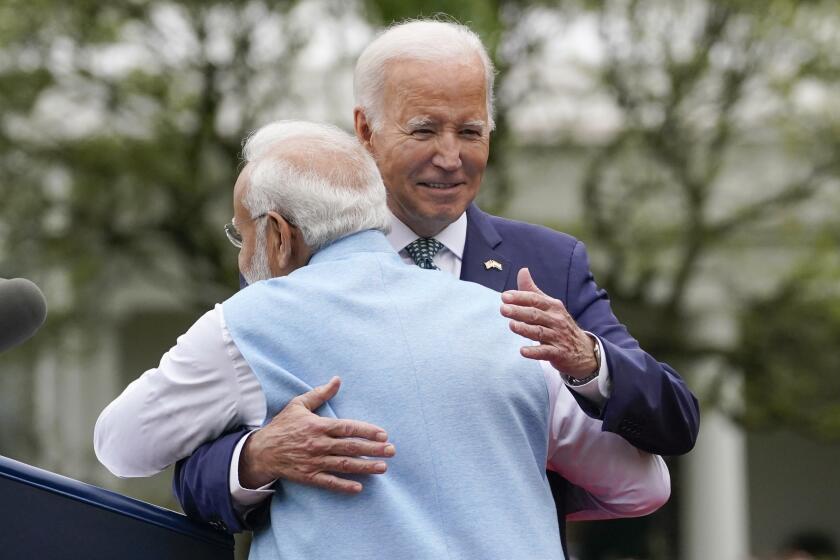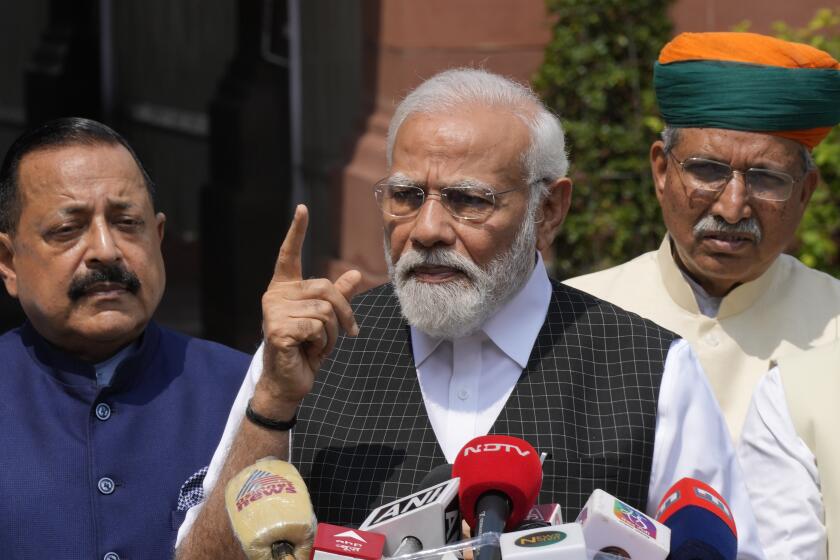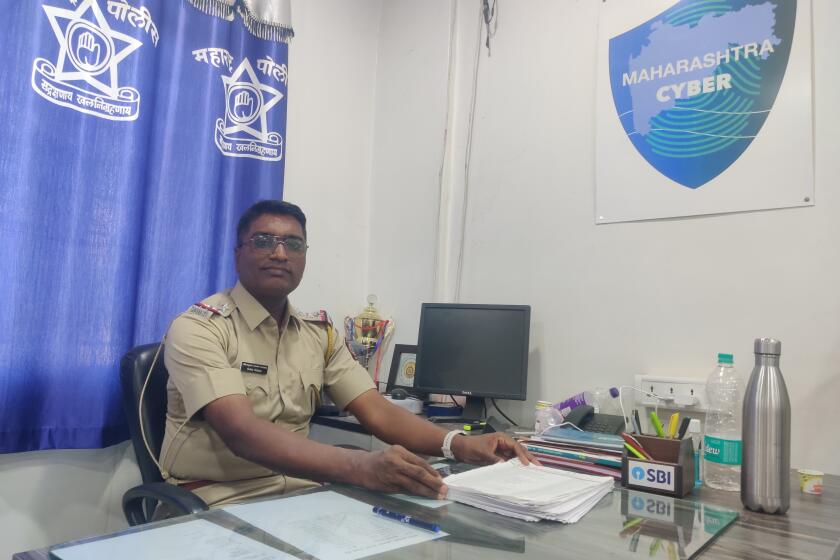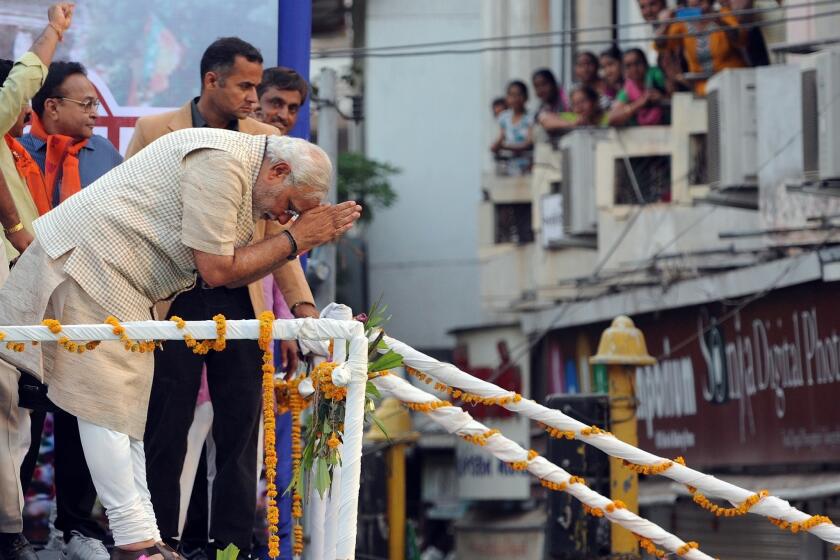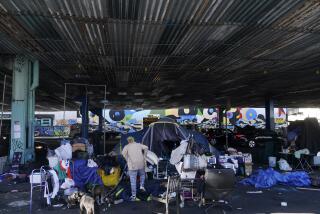New Delhi destroys homes, shantytowns for G-20 makeover, displacing thousands
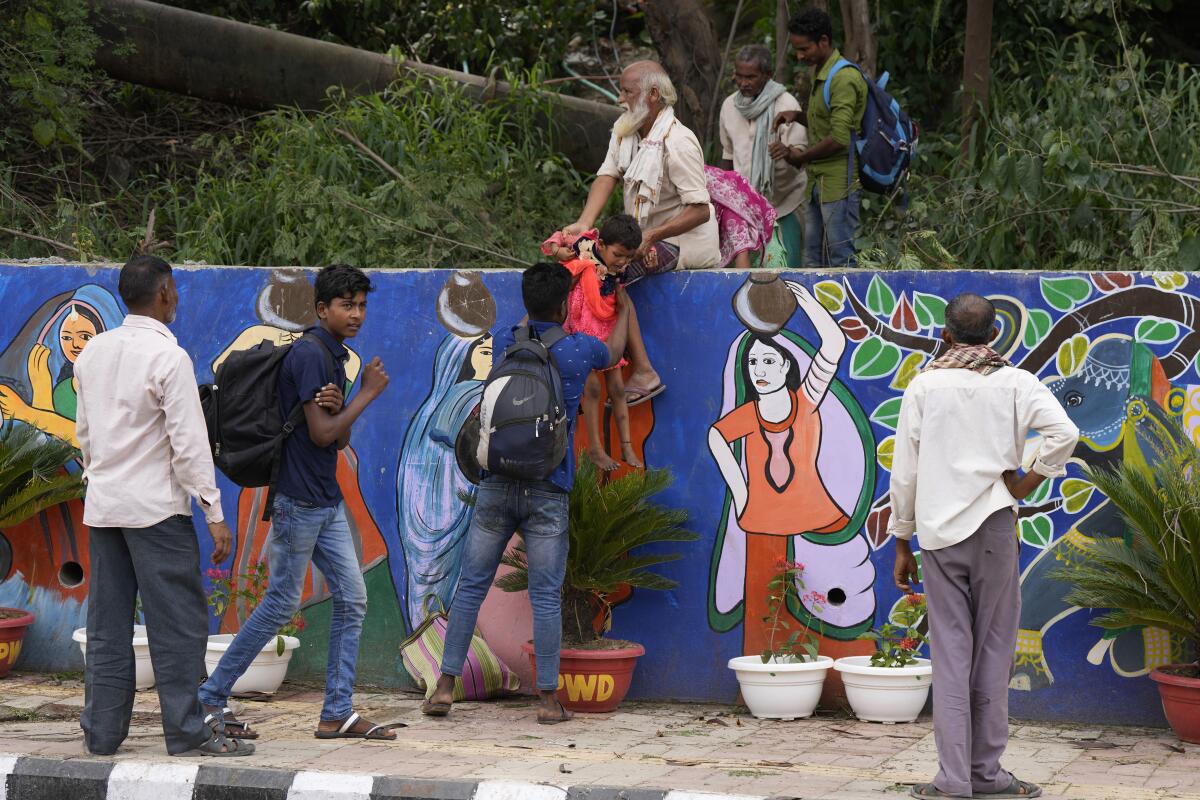
- Share via
NEW DELHI — New Delhi’s crowded streets have been resurfaced. Streetlights are illuminating once dark sidewalks. City buildings and walls are painted with bright murals. Planted flowers are everywhere.
Many of the city’s poor people say they were simply erased, much like the stray dogs and monkeys that have been removed from some neighborhoods, as India’s capital got its makeover ahead of this week’s summit of the Group of 20 major economies.
Prime Minister Narendra Modi’s government hopes the elaborate effort to make New Delhi sparkle — a beautification project with a $120-million price tag — will help showcase the world’s most populous nation’s cultural prowess and strengthen its position on the global stage.
But for many street vendors and those crammed into New Delhi’s shantytowns, the makeover has meant displacement and loss of livelihood, raising questions about the government’s policies on dealing with poverty. In a city of more than 20 million people, the 2011 census put the homeless population at 47,000 but activists say that the figure was a vast underestimate and that the real number is at least 150,000.
Since January, hundreds of houses and roadside stalls have been demolished, displacing thousands of people. Dozens of shantytowns were razed to the ground, with many residents getting eviction notices only a short while before the demolitions got underway.
President Biden emphasized the power of democracies as he hosted Indian Prime Minister Narendra Modi at the White House.
Authorities say the demolitions were carried out against “illegal encroachers,” but rights activists and those evicted question the policy and allege that it has pushed thousands more into homelessness.
Similar demolitions have also been carried out in other Indian cities such as Mumbai and Kolkata that have hosted various G-20 events leading up to this weekend’s summit.
Activists say it was more than just a case of out of sight, out of mind.
Abdul Shakeel, with the activist group Basti Suraksha Manch, or Save Colony Forum, says that “in the name of beautification, the urban poor’s lives are destroyed.”
“The money used for G-20 is taxpayers’ money. Everyone pays the tax. Same money is being used to evict and displace them,” he said. “It doesn’t make any sense.”
India’s prime minister breaks his public silence over deadly ethnic clashes in the northeast after a video of two women being assaulted by a mob.
The two-day global summit will take place at the newly constructed Bharat Mandapam building, a sprawling exhibition center in the heart of New Delhi near the landmark India Gate monument — and many world leaders are expected to attend. The G-20 includes the world’s 19 wealthiest countries plus the European Union. India currently holds its presidency, which rotates annually among the members.
In July, a report by the Concerned Citizens Collective, a rights activist group, found that the preparations for the G-20 summit resulted in the displacement of nearly 300,000 people, particularly from the neighborhoods that foreign leaders and diplomats will visit during various meetings.
India has long been home to online scammers targeting victims in far richer nations such as the United States. Now India is itself a target.
At least 25 shantytowns and multiple night shelters for homeless people were razed to the ground and turned into parks, the report said, adding that the government failed to provide alternative shelters or places for the newly homeless people.
Last month, Indian police intervened to stop a meeting of prominent activists, academics and politicians critical of Modi and his government’s role in hosting the G-20 summit and questioning whose interests the summit would benefit.
“I can see the homeless on the streets ... and now the homeless are not allowed to live on the streets either,” said Rekha Devi, a New Delhi resident who attended the Aug. 20 gathering.
From selling tea to leading his party to a landslide national election victory, Narendra Modi achieved a remarkable rise in a country long led by political dynasties and social elites.
Devi, whose home was among those demolished, said authorities refused to consider documents she showed as proof that her family had lived in the same house for nearly 100 years.
“Everyone is behaving as if they are blind,” Devi said. “In the name of the G-20 event, the farmers, workers and the poor are suffering.”
In India, home to 1.4 billion people, the struggle to end poverty remains daunting, even though a recent government report said that nearly 135 million — almost 10% of the population — moved out of so-called multidimensional poverty between 2016 and 2021. The concept takes into consideration not just monetary poverty but also how lack of education, infrastructure and services affect a person’s quality of life.
Indian authorities have been criticized in the past for clearing away homeless encampments and shantytowns before major events.
In 2020, the government hastily erected a 1,640-foot-long brick wall in Gujarat state ahead of a visit by then-President Trump, with critics saying it was built to block the view of a slum area. Similar demolitions took place during the 2010 Commonwealth Games in New Delhi.
Some street vendors say they are helpless, stuck between sacrificing their livelihoods for India’s pride and wanting to earn a living.
Shankar Lal, who sells chickpea curry with fried flatbread, said authorities told him three months ago to move away. These days, the only time he gets to open his stall along a busy New Delhi road near the G-20 summit venue is on Sundays, when police pay less attention to the street vendors.
It’s not enough to eke out a living.
“These are government rules, and we’ll do what we are told,” Lal said. “The government doesn’t know whether we are dying of hunger or not.”
More to Read
Sign up for Essential California
The most important California stories and recommendations in your inbox every morning.
You may occasionally receive promotional content from the Los Angeles Times.
